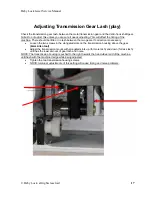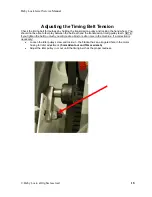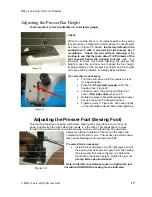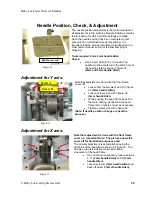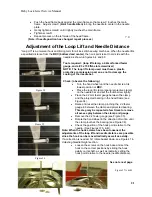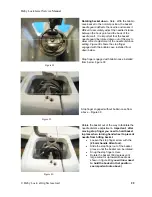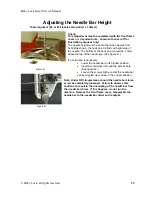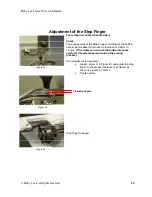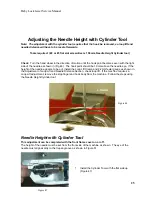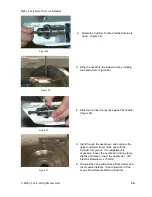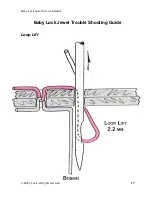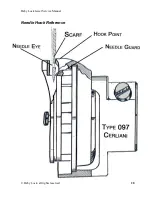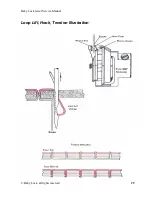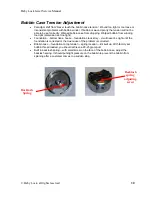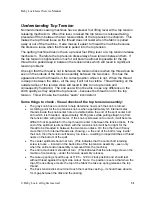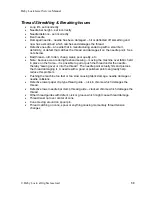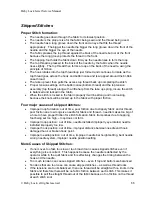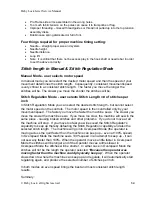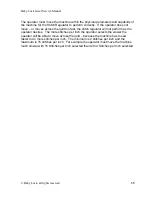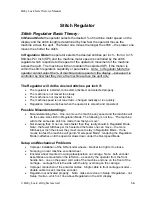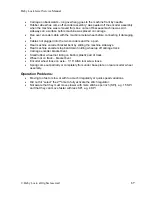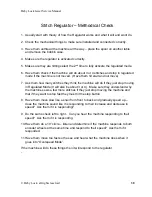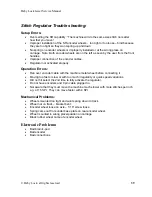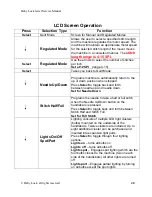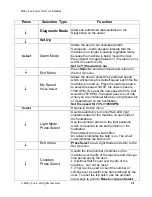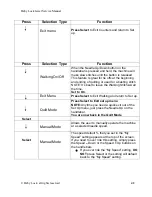
Baby Lock Jewel Service Manual
© Baby Lock, all rights reserved
31
Understanding Top Tension
Normal domestic sewing machines have a presser foot lifting lever with a top tension
releasing mechanism. When this lever is raised the top tension is released taking
pressure off from between the two tension disks of the top tension mechanism. This
makes the top thread loose so the thread does not resist when the fabric is pulled
away or out of the machine. It also makes it easier to thread the machine because
the disks are loose when the thread is pulled into the top tension.
The quilting machine does not have a presser foot lifting lever or a top tension release
mechanism. Therefore the top tension disks always have tension between them. If
the top tension is tightened too much it will become almost impossible for the top
thread to be pulled deep in between the tension disks which will result in significant
tension problems.
One sign that the thread is not in between the tension disks is when the thread can be
seen on the outside of the tension assembly between the two disks. This has the
appearance that the thread is in the correct position while it is not. When the thread
is deep in between the disks - all the way, it will not be visible. Thread floating on the
outside radius of the tension disks will result in little to no top tension and
consequently frustration. The end user will not be able to see any difference in the
stitch quality as they adjust the top tension – because the thread is not in the top
tension. This will make the machine “seem” inconsistent.
Some things to check - Visual checks of the top tension assembly:
•
The gray knob has a round dot to help determine how much the knob is turned.
•
A starting point for the top tension knob is when approximately 3-5 internal metal
threads inside the knob center hole are visible before the end of the split center bolt
onto which it is threaded. Approximately 60-65 grams while pulling straight up from
the tension disc with gram meter. If the knob is screwed on too much, it will become
difficult if not impossible for the top thread to enter in between the tension disks. If the
end of the split bolt is almost flush with the tension knob it will be too tight for the
thread to be threaded in between the two tension disks. On the other hand if many
more than 3 to 5 internal threads are showing, i.e. the end of the bolt is “way inside”
the knob, then the tension will be way too loose – resulting in looped stitches or thread
nests on the bottom of the quilt.
•
The center split bolt should not turn. (This indicates that the center bolt retaining
screw is loose – located on the back side of the top tension assembly –seen only
when the entire tension assembly is removed from the machine).
•
The entire mechanism should not turn. (This indicates that the retaining screw on the
machine front casting – under the tension assembly is loose).
•
The take up spring should be up at 11:00 – 12:00 o’clock position and should rest
without thread against the right side cutout. Note: the position is set so that when the
top of the needle eye meets the top of the fabric the take up spring releases the top
thread.
•
The back tension disk should not touch the machine casting – it should have about a
1mm gap between the disk and the casting.

